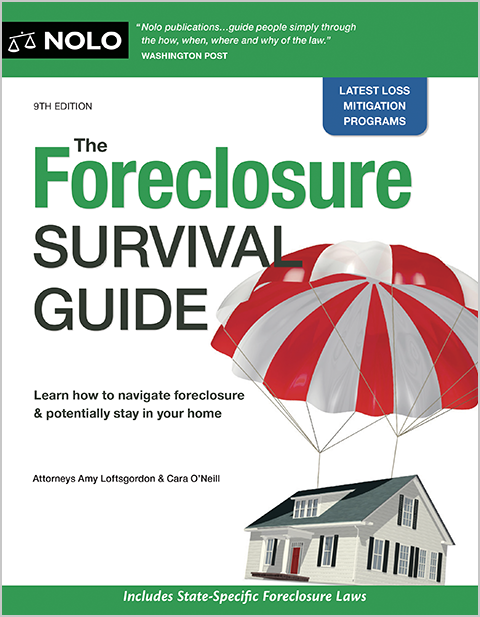Foreclosure procedures vary from state to state.
If you fail to make your mortgage payments, your lender or the subsequent loan owner, called an "investor," will likely start a foreclosure on your home. At the foreclosure sale, the property is sold to repay the lender the amount it loaned you.
Foreclosure: How It Works
Foreclosure works differently in different states. In some states, the lender will use a judicial procedure. In others, it can foreclose without going through the court system, using a "nonjudicial" foreclosure.
Full List of All Judicial and Nonjudicial Foreclosure States and Procedures in the U.S.
The chart below provides an overview of judicial and nonjudicial foreclosure processes and lists which states commonly use each process.
|
Judicial Foreclosure |
Nonjudicial Foreclosure |
|
|
States that predominantly use this type of foreclosure |
Connecticut, Delaware, District of Columbia, Florida, Hawaii, Illinois, Indiana, Iowa, Kansas, Kentucky, Louisiana, Maine, New Jersey, New Mexico*, New York, North Dakota, Ohio, Oklahoma, Pennsylvania, South Carolina, Vermont, and Wisconsin |
Alabama, Alaska, Arizona, Arkansas, California, Colorado**, District of Columbia (sometimes), Georgia, Hawaii (judicial also common), Idaho, Maryland**, Massachusetts, Michigan, Minnesota, Mississippi, Missouri, Montana, Nebraska, Nevada, New Hampshire, North Carolina, Oregon, Rhode Island, South Dakota, Tennessee, Texas, Utah, Virginia, Washington, West Virginia, and Wyoming |
|
Process |
Lender files a lawsuit in state court. |
Lender follows specific state procedures. Generally, a notice is recorded and mailed to the borrower (though the requirements vary). |
|
Notice provided |
When the lender files the complaint in court, the borrower is served notice of the complaint in person, by mail, or by publication. Once the court issues a judgment, the lender may send a notice of sale. |
In a nonjudicial foreclosure, the borrower might receive: • a notice of default followed by a notice of sale • a combined notice of default and sale • a notice of sale stating that the property will be sold on a certain date, or • notice by publication in a newspaper and posting on the property or in a public place. |
|
Officials typically involved |
Courts |
County recorder |
|
Typical loan document |
Mortgage |
|
|
Timeline to complete a foreclosure |
Usually months |
|
|
Availability of foreclosure mediation |
Depends on the state |
Depends on the state |
|
Right to cure/reinstate |
Depends on the state |
Depends on the state |
|
Redemption period following sale |
Depends on the state |
Depends on the state |
|
Deficiency judgment available |
Depends on the state |
Depends on the state |
*New Mexico's Deed of Trust Act was amended in 2006 to remove the prohibition on powers of sale in residential deeds of trust. As a result, a nonjudicial foreclosure process may be used for some post-2006 residential loans, though the practice is not widespread because the state's Home Loan Protection Act requires judicial foreclosure in most cases.
**Nonjudicial with some court supervision.
Learn More About Foreclosure Procedures
To learn more about your state's most common foreclosure process, check our Summary of State Foreclosure Laws.

